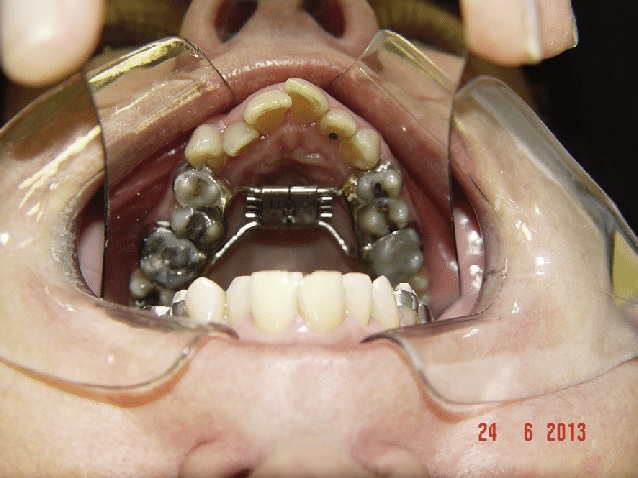Dhealthwellness.com – Whether you’re looking for a new smile or want to fix your lips, you may be wondering what mouth-widening surgery is and how it can help. Mouth-widening surgery can involve a number of different procedures, including lip lift, SARME and lateral commissuroplasty. Regardless of the procedure you choose, your doctor will work with you to make sure you are able to get the results you want.
A Surgical Technique Designed to Widen the Maxilla
Surgically assisted rapid maxillary expansion (SARME) is a surgical technique designed to widen the upper jaw. This technique has been used to widen the maxillary arch, correct posterior crossbite, and create space between the front teeth. The procedure involves surgical osteotomies, bone-borne distractors, and a custom-made orthopedic expanding appliance. The surgery is performed as an outpatient procedure under general anesthesia. Bone-borne distractors are used to facilitate transverse expansion of the maxilla. The bone-anchored distractor is fixed to the palate, which is activated by a special key. The bone-anchored distractor also functions as a retainer after expansion.
Several studies have been performed to evaluate the skeletal and dental changes that occur after SARME. The most commonly reported findings are increased projection of the cheek area in the lateral direction, widening of the nose, and a slight retro-positioning of the upper lip. Surgical widening of the lips or mouth can improve a person’s appearance and quality of life. When widening is done surgically, the mouth is expanded by 5 to 7 mm on each side. A wide mouth can improve a person’s facial expression, thereby improving his or her self-esteem.

Mouth-widening surgery involves a modification of the vermilion-cutaneous junction, which is the point where the upper and lower red vermilion borders meet. The procedure is similar to upper lip vermilion advancement, but a smaller incision is required. This operation widens the lips, thereby opening up the corners. In addition to a widening of the lips, lateral commissuroplasty can also be performed to correct microstomia. Microstomia, which is a limiting factor to a person’s function, may be caused by trauma or surgery.
A Great Way to Restore Lip Fullness and Youthfulness
Surgical lip lifting is a great way to restore fullness and youthfulness to the lips. A lip lift is a cosmetic procedure that can be performed under local anesthesia in a hospital or an outpatient surgery center. The lip lift is performed on the upper lip, or philtrum, between the nose and the mouth. The procedure involves the removal of a small piece of skin, which is cosmetically hidden in a crease. Afterwards, the incision heals beautifully.
The size and shape of the excision must be customized to fit the patient’s unique anatomy and preferences. The goal of the lip lift is to enhance the shape, fullness, and volume of the lip. The best candidates for lip lift surgery are those who have a long, tall philtra.

Y-V mucosal advancement is a surgical procedure to widen the mouth by opening the small corners of the mouth. The procedure is a simple office procedure and is not limited to the upper lip. The aforementioned procedure can result in an opening of 5 to 7mm on one side of the mouth, depending on the severity of the lip’s condition. The Y-V procedure is an important component of a comprehensive treatment plan, and may involve removing minor salivary glands when necessary. The procedure can be performed under general anesthesia. The aforementioned procedure is not a replacement for other types of cosmetic surgery.
Restoring the Function and Beauty of the Mouth
A multi-disciplinary team of doctors performed a Y-V mucosal advancement procedure in a patient with a severely atrophied lower lip. The procedure was successful in restoring a functional and cosmetically pleasing mouth by repositioning the vermilion and mucosal layers of the mouth. The Y-V procedure was performed in two stages. The first stage was a simple vertical incision a few millimeters apical to the mucogingival junction, followed by a horizontal incision a few millimeters later.
Among the least common aesthetic mouth surgeries, surgery to adjust the width of the mouth is an option. The jawbones are lengthened to fit the new width, and plates and screws are used to hold the bone in place. The procedure is usually performed under general anesthetic. There are rare complications, such as narrowing behind the palate, which can interfere with breathing. However, the most common symptoms are temporary and will not cause a long-term problem.

In the first two days, patients can take antibiotics. This will help to prevent an infection and reduce swelling. They may also be given pain medication. These medications should be taken as directed by the doctor. You may experience bruising, which can last between 10 days and two weeks. This depends on your body and the surgery you had. You may also experience swelling in the throat. This will cause pain in your ears, jaw and throat. Swelling in the throat may also interfere with your ability to clear your ears.
Reference:
